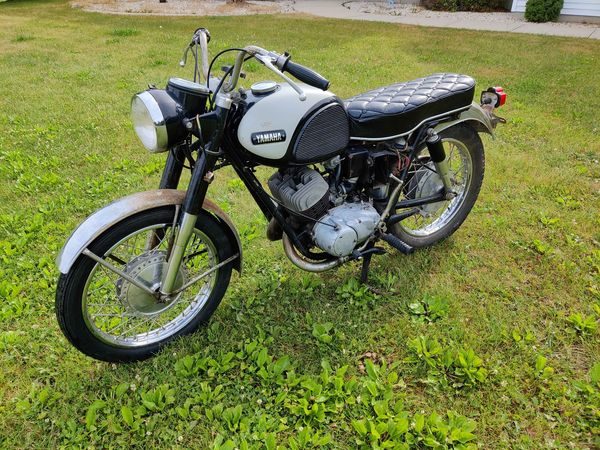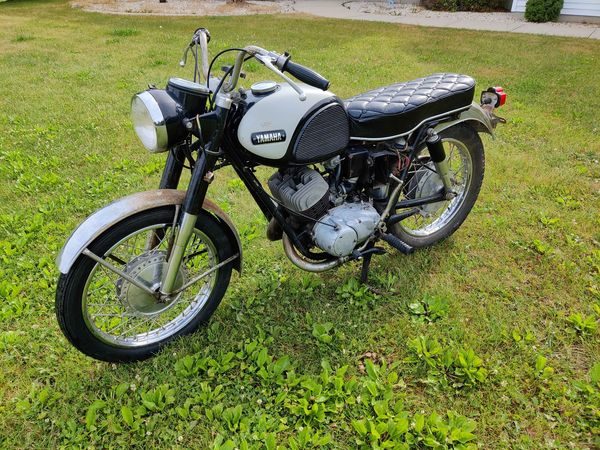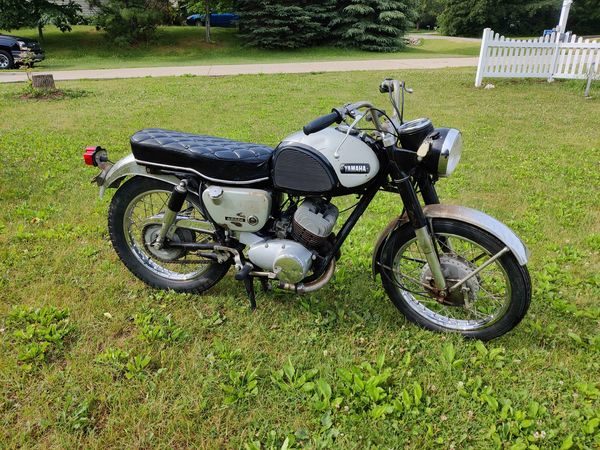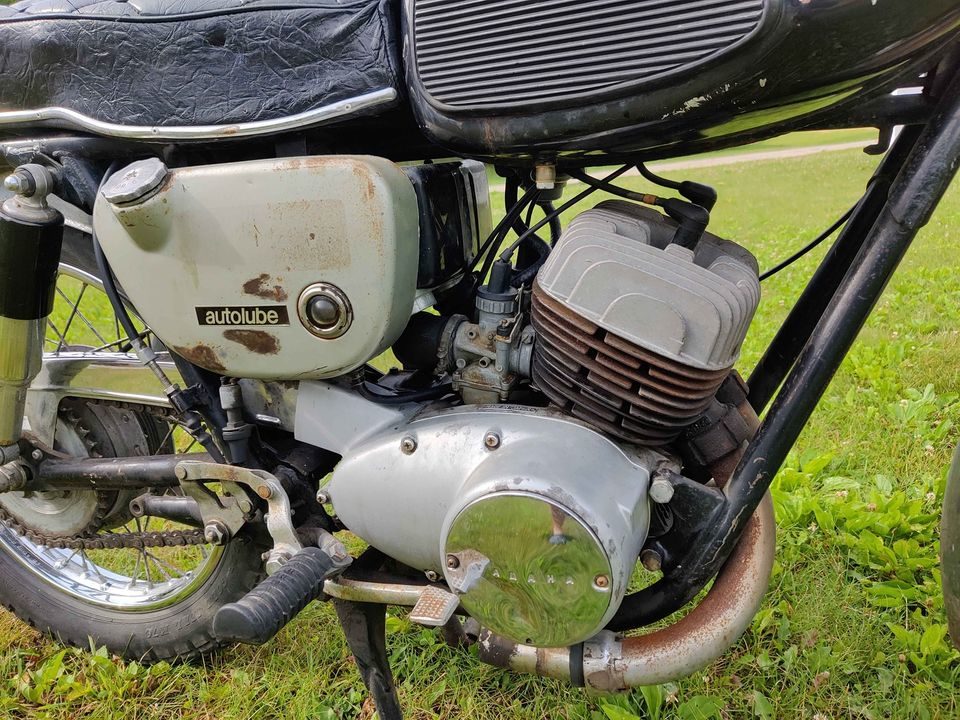It's all 'water under the bridge', but 'earlier' the motorcycle world was different. The motorcycles still had a lot to learn and the people who worked for the importers were not yet very standardized. There was still plenty of room for improvement and characters.
Yamaha's Autolube lubrication system was such a major improvement
By mixing the oil with the petrol separately and neatly dosed via a pump, you no longer had to fiddle with mixing lubrication 'at about' and such a then high-performance two-stroke ran lubricated but virtually smokeless. And that the globally acclaimed system had its problems? Oh well… The mixing ratio varied between 1 to 20 at a brisk walking pace to 1 to 18 at full throttle. But there was a catch in the oil. Yamaha had thought of branching off the oil pump drive from the main shaft of the gearbox. And with the clutch actuated, it was not driven. Then there was no lubrication. That wouldn't even be a problem when waiting at traffic lights if the Yamaha riders didn't have the sporty habit of playing with the throttle, the revs, while waiting. If the Yamaha pilot then wanted to blast away at the green light, the case often wanted to jam.
Really excited
Another leather thing: The Yamaha YDS3 was equipped with a real air filter housing to dampen the intake noise. That was just a bit too small in terms of volume to provide the YDS with enough air at full trot. But in fact the YDS3 was an ordinary motorcycle that was as close as possible to the Yamaha production racers in terms of block and chassis construction. The Yamaha YDS3 was presented in the States and then came to Europe. The press was wildly enthusiastic. At that time the Japanese 250'ers already performed more, better and longer than the British 350 cc engines. Only the Japanese had not yet fully mastered the tuning of the suspension and damping and the parts supply was still somewhat rattling in the sixties, which was clear time and again from the driver tests in the Weekblad Motor. But hey: The British bikes for which parts were available usually broke down more often. So below the line the useful driving time remained the same.
Meanwhile, Honda had success with the C72 (250 cc) and the bored-out V77 (305 cc). Yamaha also saw that revenue model. So the Yamaha YDS3 got an almost identical twin by letting the 250 cc block grow a bit.
Most early Japanese two-strokes did not survive
Not because they were bad, but usually because they were kicked off mercilessly. That limited the replacement market for parts to keep the stuff running forever. The sporty Japanese middle class cars had something of 'throw away after use' from 1965. Dealers did the same with their stocks after a few years and those things mean that restoring – for example – a Yamaha YDS3 can be quite challenging. Even Yamaha legend Ludi Beumer took a lot of effort to get his collection in order.
And he was still the man with the worldwide contacts
But whether that is a reason to leave such a find as the Yamaha YDS3 in the photos? Restoration is a chore. But if the restoration is successful, you will have something unique.
Also read:
- Yamaha RD350
- Yamaha RD350LC
- The Yamaha XS, the best engine that Norton never made
- The Yamaha XS 400 (Seca) DOHC
- More stories about classic engines










Lubrication and 2-strokes…. Whole studies. Suzuki's oil injection, Jawa's oilmaster, Honda had something similar on their NS/MVXs. It is always something: gas close downhill also has one thing with mixed lubrication, so gas up! … and always fingers on the clutch. BMW also had combination meters, must have been imitated
And then we haven't even mentioned the beautiful sound of that two-cylinder….
Anyway, I found it addictive!
Those combi-clocks are, in my opinion, the hallmark of the 60s Japanese motorcycle. And all equally beautiful.
But soon the two separate meters were introduced, the style characteristic of the English bicycles that were then still a benchmark in Europe and especially America. Not ugly either.
The Suzuki Katana still had about meters, and then we are talking about the 2nd half of the 80s.
A style, or elements thereof, often return, such as with the Katana 1100 from 1981. But also in completely other product lines, such as the Nikon 35 TI, classical details are used, which often determine the image. And this anthracite-colored meter shown? Beautiful through simplicity!
Hi,
Never had a thing for Japanese motorcycles in all my life, but this one is 100% ok
Since my everyday motorcycle is a 1957 Puch 250 SG,
I have to chuckle a bit for the gas position dependent oil dosage.
Hans (Long live the single-cylinder two-stroke, preferably with two pistons).